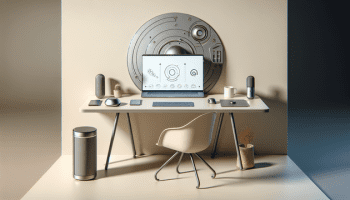![]()
Ever since the first Pixel 2 XL reviews hit the web, there has been a lot of chatter about the 6-inch POLED display of the device. The LG-sourced panel has been heavily criticised for its subpar performance compared to OLED panels sourced from Samsung.
In fact, the display of the Pixel 2 XL is perhaps the only thing which stops it from being the perfect smartphone of 2017. Since the initial reviews were published and with the initial batch of the Pixel 2 XL making its way into the hands of customers, almost everyone has constantly complained about its poor OLED panel. In fact, the panel seems to be even worse than the 5.5-inch OLED panel used by Google on the original Pixel XL last year.
So, what exactly are the issues with the Pixel 2 XL’s OLED display?
Well, for starters, the display lacks the usual punch that one has started to associate with OLED panels. Instead, colors on the Pixel 2 XL’s panel look muted and almost washed out. Google does include a Vivid display color mode on the Pixel 2 XL which boosts color saturation by 10 percent but the improvement is barely noticeable and still not enough.
it honestly feels like a bad panel. Color is drab, greys look grainy. Where’d the reds go? pic.twitter.com/TMY0wsJWak
— Sebastiaan de With (@sdw) October 19, 2017
https://twitter.com/vladsavov/status/920697103613128704
As if that was not already enough, the Pixel 2 XL’s OLED display has terrible viewing angles. Look at the display from anything but the perfect angle and everything on the display will have a cool tone to it. This issue was present in the very early days of OLED panels manufactured by Samsung. While the Korean company has made huge improvements to its OLED technology since then, its Korean sibling — LG — is yet to solve this problem.
First impressions coming from the Pixel XL's OLED screen, the Pixel 2 XL's OLED truly is bad. Viewing angles are terrible, colors look dead. pic.twitter.com/1LwaJzrVyP
— Artem Russakovskii (@ArtemR) October 19, 2017
As if these problems alone were not enough, the Pixel 2 XL’s pOLED panel has another issue. While displaying any solid color, the display will have a sandpaper-like dirty texture to it instead of a uniform single color. This issue does not seem to affect all panels but it does exist.
Then there’s also the fact that the Pixel 2 and Pixel 2 XL are the first smartphones from Google to ship with wide color gamut support. Due to this, the display on the new Pixels will show colors differently than their predecessors and compared to other existing Android devices in the market. However, that does not change the fact that the Pixel 2 XL’s display is a huge disappointment.
The smaller Pixel 2 does not suffer from such issues despite coming with a 5-inch OLED panel. That’s because the panel has been sourced from Samsung which is renowned for making the best OLED panels in the market.
Here’s what Google has to say on the whole thing:
“We designed the Pixel display to have a more natural and accurate rendition of colors this year but we know some people prefer more vivid colors so we’ve added an option to boost colors by 10% for a more saturated display. We’re always looking at people’s responses to Pixel and we will look at adding more color options through a software update if we see a lot of feedback.”
Don’t read too much into Google’s statement here. While the company can definitely help make the Pixel 2 XL’s display more vibrant with a software update, it still does not change the fact that the device comes with a sub-par panel that is not worthy of being used in a 2017 flagship Android phone. Suddenly, Apple paying a premium for Samsung’s OLED panel for the iPhone X makes so much sense.















